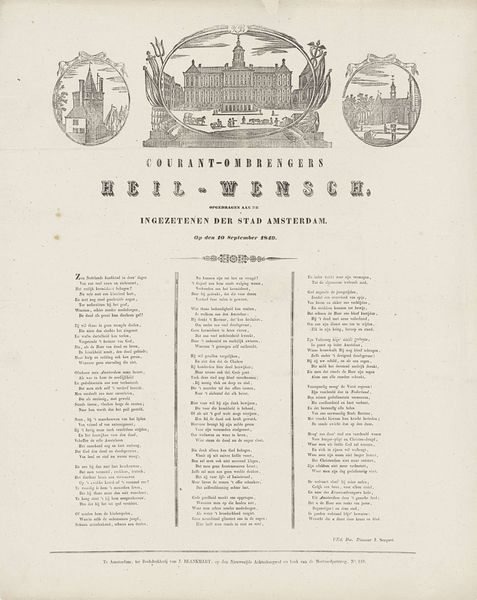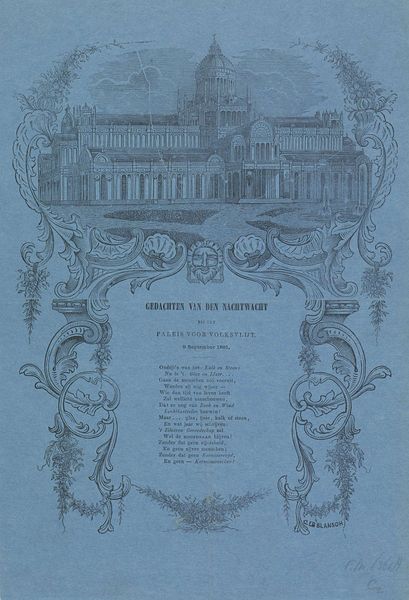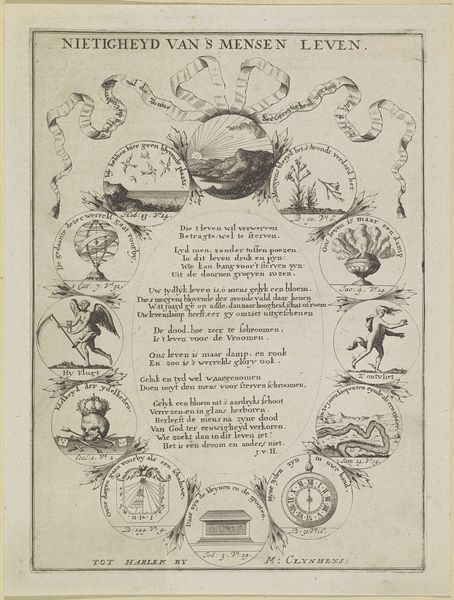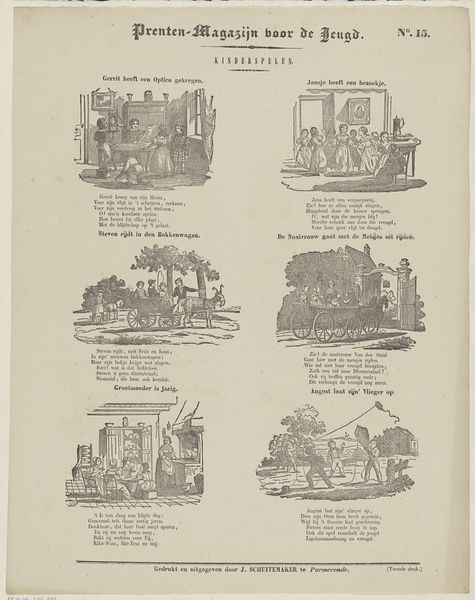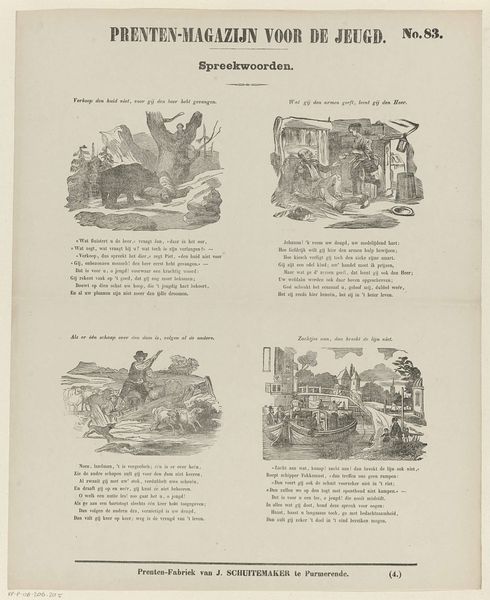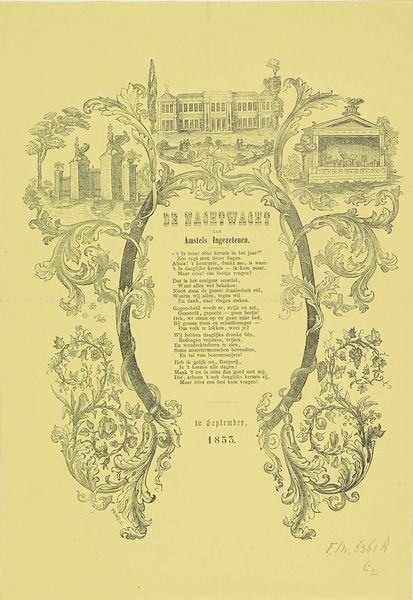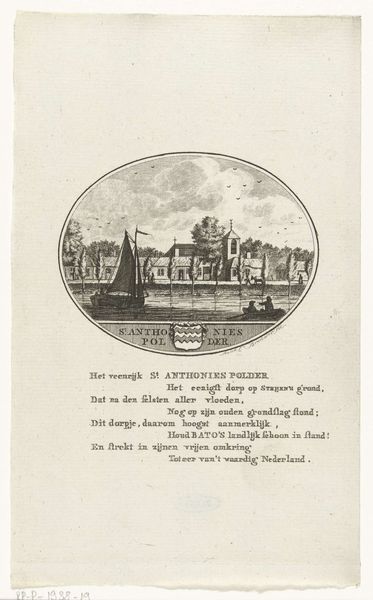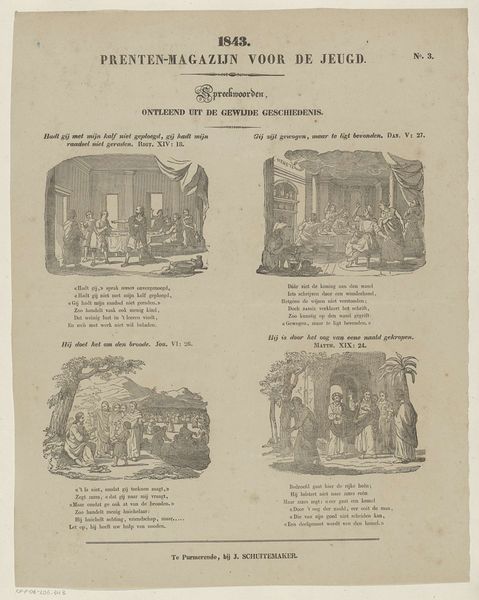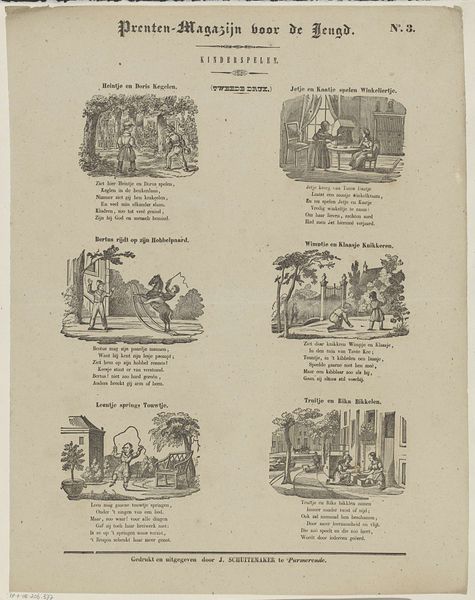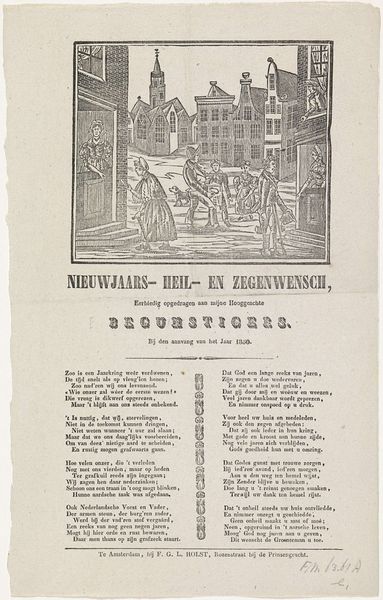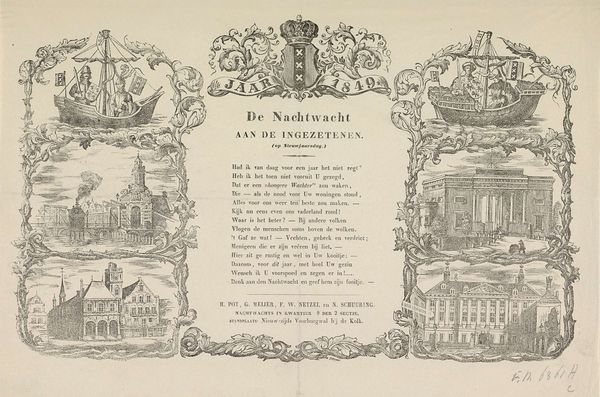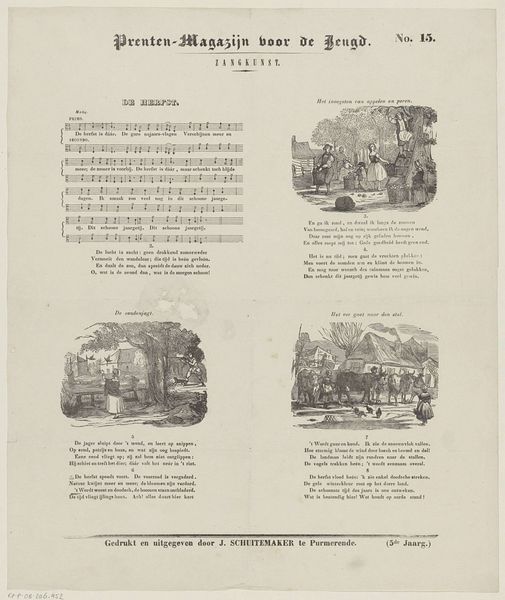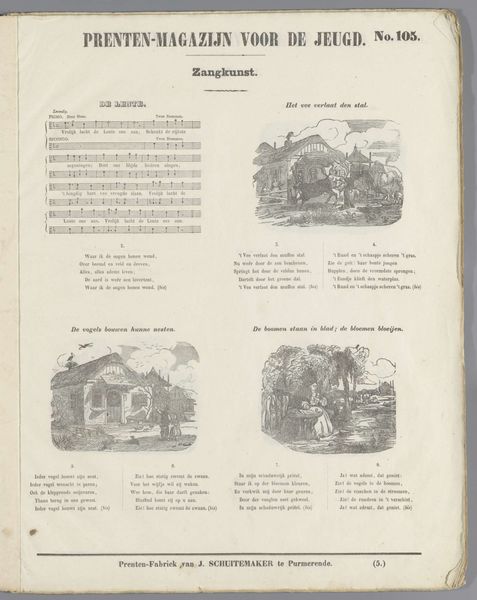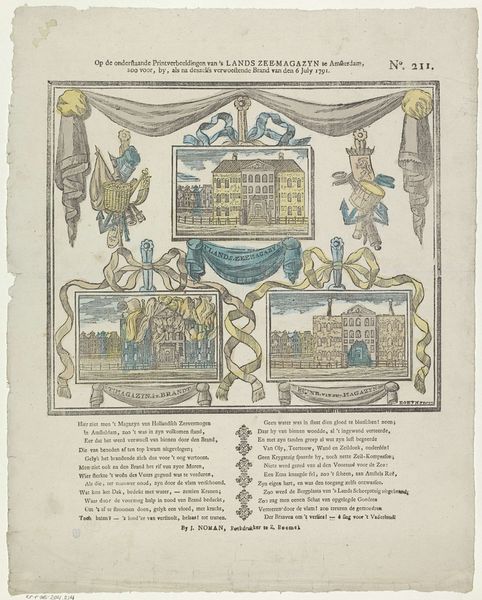
drawing, graphic-art, print, paper, ink, engraving
#
portrait
#
drawing
#
graphic-art
#
dutch-golden-age
# print
#
landscape
#
paper
#
ink
#
line
#
cityscape
#
engraving
Dimensions: height 282 mm, width 216 mm
Copyright: Rijks Museum: Open Domain
Curator: This piece is titled "Nieuwjaarswens van de Amsterdamse nachtwacht voor het jaar 1879," which translates to "New Year's greetings from the Amsterdam Night Watch for the year 1879." It’s an engraving, a print made with ink on paper, created around 1878-1879. Editor: My initial impression is a curious mix of formal civic pride and wintry gloom. The cityscape on top feels somewhat sparse, yet the border framing the text below is elaborate. Curator: Exactly. Consider that prints like these served as both functional communication and as expressions of civic identity. They highlight the Amsterdam Night Watch and depict local landmarks. What statements were the artists making through its materiality? Editor: Presumably it shows an emerging industrial district; notice that the image appears meticulously rendered through engraving and likely made possible through collaborations between the city and print workshops such as the "A.C. Willeumier" noted at the bottom. Curator: Yes, and I also observe the distribution of imagery and text, with symbolic local heraldry bordering the formal prose. The poem itself, celebrating the 'Night Watch', speaks to ideas of steadfastness and safety, with references to 'Amstel's trans', referring to prosperity under its patron figure. These were distributed by a social and economic upper crust wishing each other success as much as its home city. Editor: Do you think the style contributes to its message of industrial-era pride and resolve? The clean lines lend a technical, precise feel. How do these reflect broader shifts toward technological modernity in Amsterdam at the time? Curator: Indeed! The emphasis on clarity in line work gives it an air of scientific precision fitting within an ethos of progress and civic-mindedness through industrial innovation. The distribution also cements the importance of graphic arts as political tool, a way to connect powerful groups with visual rhetoric through media. Editor: Overall it creates an ambiguous sentiment toward both civic progress but one that suggests a kind of detachment, typical from rising middle class circles that defined Amsterdam’s image through the Industrial era and onwards. Curator: That’s very insightful. I've also now come to appreciate this unique historical artifact as a carefully crafted symbolic offering between various industries hoping for future success in a globalizing world.
Comments
No comments
Be the first to comment and join the conversation on the ultimate creative platform.
